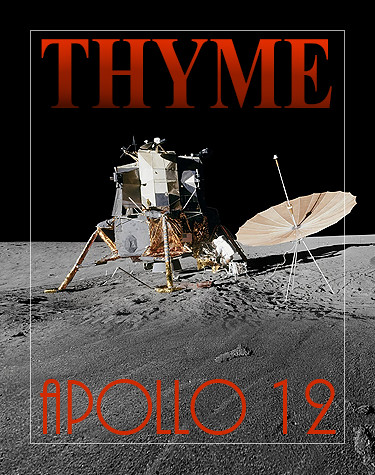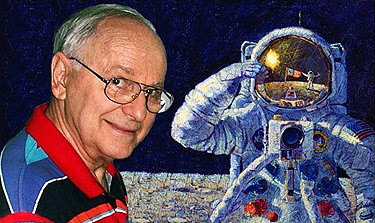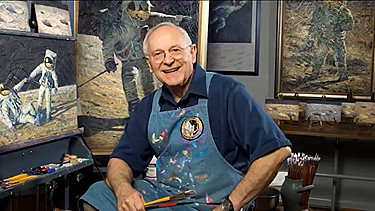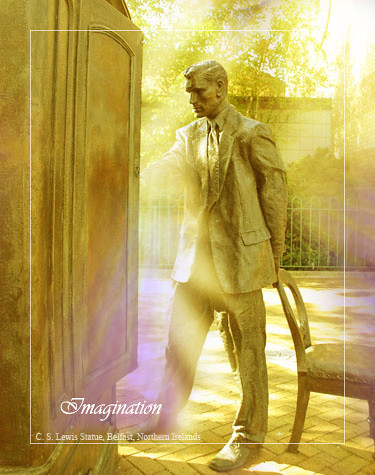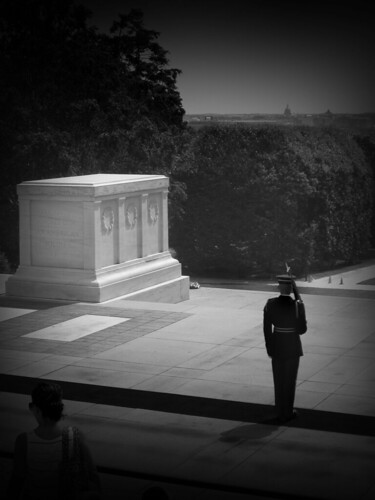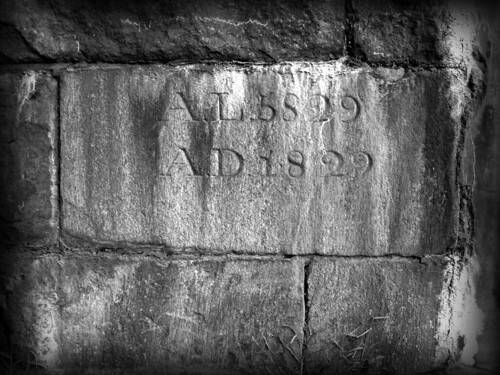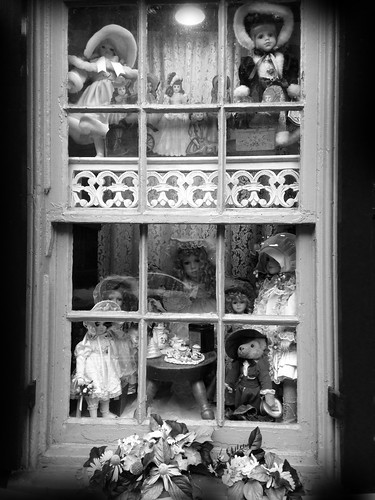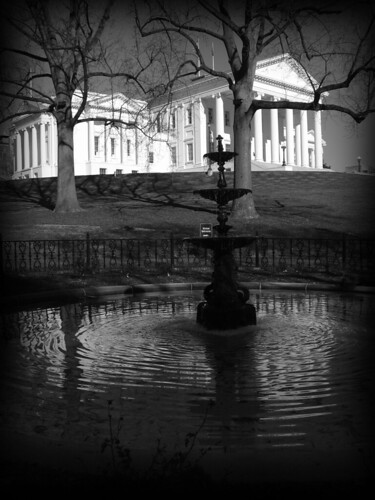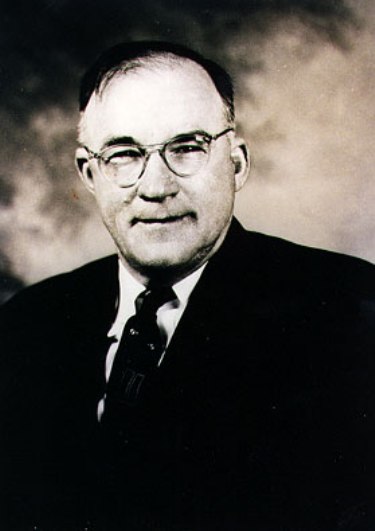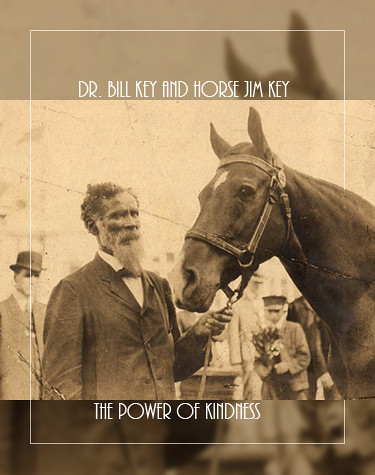
Volume XVII, Issue XIX, XX, XXI:
Today’s TRIPLE ISSUE gives you several weeks’ reading as I step back from weekly publication to devote myself to several important projects. I hope you enjoy it.
The Smartest Horse that Ever Lived
A True Story
More than simply the biography of an unusual sideshow act, Beautiful Jim Key by Mim Eichler Rivas takes a thorough look at American history from before the Civil War to the mid-20th century, examining race relations, World’s Fair and exposition history, and the development of the humane movement. The story centers around the “Arabian-Hambletonian educated horse” Beautiful Jim Key, his breeder William Key, who was a business-savvy former slave, and their promoter, Albert Rogers, a privileged young New Yorker who aspired to being a philanthropist. (read more)
Jesus, Horses, Healing
Risen Ridge Ministry

Dezi, Socks and Maple graze at Risen Ridge Ministry. This Spring they will begin providing ministry sessions. Photo by Jen Beck.
Horses have an amazing way of communicating. They are honest, gentle, and encouraging. In a horse ministry, people who are seeking healing through the love of Jesus will come and find it through a relationship with a horse and a facilitator. They will learn what it is like to care for another's well being, and what it feels like to have an honest relationship based on love. Horses don't care about your past or what you look like. Over and over, the horse will see you for who you really are, whom God created you to be. The experiences will demonstrate that God's love never fails, can bring restoration, and how we all have value. (read more)
I will restore you to health and heal your wounds, declares the Lord.” - Jeremiah 30:17
Beautiful Jim Key and Kindness
Sitting in the Richmond shoe store, I made a friend. After a wonderful morning teaching art to our middle school and high school students, I had rushed back home so we could drive a friend to the Richmond airport for a flight to Nashville. My wife and I needed a date night so we planned on going to dinner in Richmond. “I just have to exchange some shoes” she said so after a fairly quick trip to the departure entrance we made our way to Willow Lawn Shopping Center. I grabbed a comfortable chair in the shoe store while my wife spent about an hour finding what she needed. I wished I had thought to bring a book – I’m reading a really good one by a Japanese runner who’s a novelist – Haruki Murakami, and his creative process is a lot like mine. Alas, I had forgotten to bring it.
There were two comfortable chairs in the store at the front and I soon moved our coats and stuff for a young lady to sit down. She was accompanying her mother on a shoe buying expedition and I offered that I would give up my seat when mom needed it. And so began another interesting conversation between two people from very different backgrounds and ethnicities. It was great! I discovered that this young lady, accompanying her mother on a shopping expedition, worked multiple jobs and was studying nursing. “Have you ever heard of this amazing horse?” I asked and we watched the story of Beautiful Jim Key on my phone. The essence of the story is the power of true kindness and this young woman was the picture of kindness. The story takes place in the aftermath of the Civil War – a time when society and mob thought was at its worst and yet the story of Jim Key (the horse) and Bill Key (who trained him) shines like a lighthouse in that troubled time. Kindness, manifested in individual behavior, was a powerful force in the life of Bill Key. Born a slave, he had the good fortune to have a master who treated him with all the kindness one would afford to a son. In return, Bill had accompanied his master’s two sons, who he thought of as brothers, into battle. He not only protects his brothers, but he helps many slaves out of the South.
After the war is over, Bill and his two brothers come home only to find that their father has lost their home. Bill, who was quite a card player, had amassed a considerable amount of money after he had been taken prisoner by the Union. He had been captured and was apparently spared execution because his captors found that he was an excellent cook. He won many a U. S. Dollar at cards and used the money to buy back the home he had once served in. He did this so the man who had been a father to him would have a place to live out his days. And so the story of the amazing horse, Jim Key, is really a story of how true kindness, individually practiced, can work great changes in the world we live in.
And so here we were, sharing the wonder of kindness in our own messed up time. I learned about all the good places to eat around Willow Lawn, but we both admitted we loved Chick Fil A. Richmond’s original Chick Fil A is in Willow Lawn and as my wife finished her shopping and apologized for taking so long, I suggested we go there. I know she had been thinking of some local health food type place near their, but she graciously agreed to a quicker and simpler dinner, enjoying her cobb salad very much! Chick Fil A has made a place for itself by the simple attribute of actually finding and expressing pleasure in serving. Coming in to Willow Lawn, we couldn’t find the shoe store. “Let’s ask him,” my wife said as she pointed out a young man at the crosswalk. He pointed out the direction. I thanked him. Se said “My Pleasure!” and I said to my wife “I know where HE works!” Human Kindness! It is a way of truly saying to another person “You Belong Here!” It is a virtue who’s practice truly brings not only great good, but real satisfaction.
An Interesting Take on Society
[click to read]
by Lela Markham
Have you seen the latest Joker movie? I wasn't sure I wanted to go. There's the money - about $18 a ticket here in Fairbanks -- but Brad convinced me to go since it isn't yet cold enough to worry about needing to warm our car mid-movie. (Yes, Alaska - a very challenging place). Brad knows me, though. I love to analyze films, to figure out what they're trying to say to their viewers. So Friday night date, movie. And while in the line to buy tickets, we ran into our son and his girlfriend who were going to see the same movie.
The reviewers of the movie all seemed to cite it as “dangerous,” fearing it might inspire insurrection groups to identify the character as a hero and imitate him. Others condemned the film’s “willful unpleasantness” and “rare, numbing emptiness” (we call that nihilism). Still others draw a connection between Joaquin Phoenix’s depiction of the character and the validation of “white male resentment” seen on the political right. As an observer of social psychology, however, I saw Joker's commentary on the phenomenon of collectivism (what another commentator called "de-individuation.") The film's true evil (the Big Bad, if you will) is a broken, frustrated society that latches onto random, almost purposeless acts of violence, imbues them with deeper meaning, and uses them as justification for mass violence and brutality. On the way to the car, Brad asked me "What was the political message?" and I didn't find Joker to be a political movie. It's a psychological one, showing the dangers of group action and the power of group narratives. Our son's girlfriend was so impressed with my answer that the young folk asked the old folk to hang out and discuss it. This is a synopsis of about three hours of drinking coffee and three thinkers and a construction worker psycho-analyzing a fictional character.
In Joker, Gotham City is broken, but no one class or group shoulders the blame for the dysfunction. Arthur Fleck is failed by every level of society - mugged and beaten by a street gang, brutalized by rich young bankers, abandoned amid the de-funding of the public mental health care system, and permanently scarred by his own family. Lots of blame to go around. And yet, every class in Joker seeks to shift the blame for society’s woes. The rich denigrate the working class and the working class dehumanize the wealthy. A TV host (played by, ironically, Robert DeNiro) mercilessly teases Arthur, and all classes share the same glee at his televised failures.
In their desperate need to find someone else to blame, the masses of Gotham condemn "them" (I think they were "the one percent"). Society then elevates Arthur's purposeless act of murder into kind of social rebellion. The populace knows zero significant details about the killing -- no motive, circumstances or even the identity of the perpetrator -- but imbues it with shared meaning. They've already constructed their narrative and will fit a random event to match it, and thus declare Joker a hero.
When Arthur's identity is revealed in the movie’s climax, hordes of protesters are already ready to revolt. Another purposeless murder by Arthur sparks riots. On the brink of public suicide (akin to suicide by cop in mass shootings, perhaps), Arthur issues a rambling rant where he blames the elites for the state of Gotham, claims credit for the earlier killing, and decides to enjoy one last bit of senseless violence. From a psychological perspective, Joker is an incredibly realistic and damning depiction of group dynamics. Unlike previous versions of the Joker by Heath Ledger and Jack Nicholson, Joaquin Phoenix’s Joker has no plans, no real motives, and no overarching point to make. He's a victim of both circumstances and his own impotent rage. He doesn’t manipulate or use other people to achieve his ends, probably because he has no actual ends to achieve. In this version of Gotham, everyone is awful to everyone, and it is society that makes Joker what he is, not by their treatment of him, but through their mythologizing and romanticizing of his purposeless actions.
De-individuation is a phenomenon where crowds assume a collective identity and become willing to commit even the most heinous acts, as seen in the Stanford Prison Experiment, but also Nazi Germany, Communist China, the old Soviet Bloc states, and Southern slave plantations. De-individuation is seen when crowds assume a collective identity, diffuse individual responsibility among themselves, and become willing to commit mass riots and lynch mobs because they come to believe that simple numbers equate to moral action. The collective identities of de-individuated groups result in biased recollections and interpretations of events that devolve into horrifying violence.
This is exactly what happens in Joker. All Arthur Fleck does is commit relatively aimless murders and issue a relatively incoherent angry rant on television. The true villain of the movie is the broader society that latches onto these actions and words and imbues them with nonexistent meaning to justify their own crimes.
As a novelist, I recognize that fiction reflects reality. In the search for meaning amid an increasingly polarized and hostile political climate, groups come together and lionize monsters. While the mass murderers Che Guevara and Mao Zedong are praised by many on the political left, their self-aggrandizing brutality ignored in favor of the mythologized virtues of socialism and communism, the nationalist ideologies responsible for mass tragedy in the past are lauded by those on the political right. Feelings of disenfranchisement and resentment produce violent mobs on both ends of the political spectrum, hence Antifa and the Proud Boys.
Brad walked away from the film with a deep sense of discomfort. Call him "Everyman". Like most American moviegoers, he prefers simple, somewhat cartoonish evil villains who he can assume are "the other" because they don't prompt any self-reflection. None of us want to identify with the villain. We prefer to see a message against our ideological opponents rather than our own potential for immoral behavior. Brad served as our "normal" control as Keirnan, his girlfriend and I analyzed the movie at a hole-in-the-wall restaurant afterward. We agreed that like the hordes of Gotham, we seek to villainize those who disagree with us while excusing the behavior of our in-groups. Such circumstances make instances of mass violence and de-individuation all the more likely.
Joker is not about Trump and the alt-right any more than it is about Antifa and the radical left. It is about the apolitical dangers of group de-individuation. We need such examples outside the psychology classroom because otherwise, the examples will be on the news. We've already seen it in the Antifa riots and Charlottesville. We need uncomfortable films like Joker to show us the dangers of grouping up and allowing apolitical psychological forces dictate our interactions with our fellow humans and, heaven forbid, our government policies. (read more)
An Ignorant TIME
[click to read]
Stefan Kanfer on the Decline of Cultural Knowledge
Last week, newspaper city rooms were alive with the sound of schadenfreude, and Twitterers tweeted about the latest display of ignorance in TIME. To watchers of newspapers and newsmagazines, the incident came as no surprise. During the still-young millennium, ad dollars have fled from traditional periodicals to television and the Internet. Result: Shrinking readership, diminished staffs, and outsourced research. In TIME’s case, the publication relied on a data-compiling site, the Open Syllabus Project, for a list of the most-read female writers in college classes. Number 97 was Evelyn Waugh. The trouble is, Waugh was a male. (read more)
My students are know-nothings. They are exceedingly nice, pleasant, trustworthy, mostly honest, well-intentioned, and utterly decent. But their brains are largely empty, devoid of any substantial knowledge that might be the fruits of an education in an inheritance and a gift of a previous generation. They are the culmination of western civilization, a civilization that has forgotten nearly everything about itself, and as a result, has achieved near-perfect indifference to its own culture.” – Patrick Deneen, Notre Dame Professor
A Crisis of Faith in the Millennial Generation
[click to read]
The 21st-century church is experiencing a crisis of young people rejecting the godly foundation upon which they were raised. Through this edition, best-selling author and apologist, Lee Strobel, will address this generation's lack of biblical heritage. He looks at why so many millennials are skeptical about faith and how the church can educate young people to defend their beliefs. (read more)

Volume XVII, Issue XX:
A Repeat of One of Our Favorite Issues
Thanksgiving is Good for You
Enter his gates with thanksgiving and his courts with praise; give thanks to him and praise his name. For the LORD is good and his love endures forever; his faithfulness continues through all generations.” -- Psalm 100:4-5 NIV
The 'other' Weekly News Magazine [click to read] once featured the story: "Why ANXIETY is Good for You." We at THYME see this one a bit differently. In the Bible, Philippians 4:6 exhorts us NOT to be anxious. Rather we are to view our needs in light of our relationship to a loving G-d. Indeed, our requests are presented in light of the gratitude we feel as we consider the goodness and provision to be found in the Divine.
Not be anxious? In today's world? That is precisely the direction given the believer. We live in a stress-filled world and we are not commanded to shut ourselves away but rather to interact with it... becoming a conduit for G-d's Love to reach it. Indeed History shows us people of Faith fighting plagues, caring for the helpless and generally DOING things, often navigating the best course we can in unclear situations. We are NOT helpless, though we often seem to labor in insufficient light.
Fitting thoughts as we celebrate the feast of Thanksgiving. These are indeed anxious times, and it is easy to become overwhelmed by the general angst of the period we live in. History tells us of Divine promise and fulfillment. The Patriarchs piled up stones to remind them of G-d's faithfulness in the past and to keep them faithful as they waited to see His faithfulness in their present lives.
And it shall be on the day when ye shall pass over Jordan unto the land which the LORD thy God giveth thee, that thou shalt set thee up great stones, and plaister them with plaister: And thou shalt write upon them all the words of this law, when thou art passed over, that thou mayest go in unto the land which the LORD thy God giveth thee, a land that floweth with milk and honey; as the LORD God of thy fathers hath promised thee." -- Deuteronomy 27:2-3
Indeed, one must recount the stories of how G-d met needs in times past. One must also tell of the promises of G-d. Faith needs fuel, and Gratitude is the substance that makes our faith burn bright, even in the darkest of times.
Standing on the Promises [1.]
Standing on the promises of Christ my King,
through eternal ages let his praises ring;
glory in the highest, I will shout and sing,
standing on the promises of G-d.
Refrain:
Standing, standing,
standing on the promises of Christ my Savior;
standing, standing,
I'm standing on the promises of G-d.
Standing on the promises that cannot fail,
when the howling storms of doubt and fear assail,
by the living Word of G-d I shall prevail,
standing on the promises of G-d.
(Refrain)
3. Standing on the promises of Christ the Lord,
bound to him eternally by love's strong cord,
overcoming daily with the Spirit's sword,
standing on the promises of G-d.
(Refrain)
4. Standing on the promises I cannot fall,
listening every moment to the Spirit's call,
resting in my Savior as my all in all,
standing on the promises of G-d.
(Refrain)
The staff of THYME wish you a most blessed Thanksgiving!

Sunset on the Sound, Outer Banks. Photo by Karley Spralin.
The 'Common Course and Condition'
America's First Experiment with Socialism
When the Pilgrims first set up their economic system in Plymouth they opted for a system where all the results of their labor were held in common. All of the colonists then drew from the common store what they lived on. The Common Course and Condition, as this system was called, resulted in some bad feelings on the part of those who produced effectively and some lack of initiative on the part of those who were happy to have the food without the work.
The system produced constant shortages and a man who rose early and worked diligently came quite naturally to resent his neighbor who slept in and contributed less effort. Friction was high among the colonists and in 1623 Governor William Bradford declared the common course a failure.
The colonists were next assigned plots by families. Larger families were given larger plots. Everyone was responsible for the production of his own land and growing food for his own family. The results were notable. Far more crops were planted and tended. There was plenty instead of shortage and all in response to this new sense of ownership.
Church Found where
Pocahontas was Married

Her eyes meet yours as you enter the Virginia Executive Mansion. A young girl from days long ago, yet her presence in the foyer immediately captured my attention. There are two portraits of Pocahontas in the room, one in English clothing (below) and the more familiar rendering seen above.
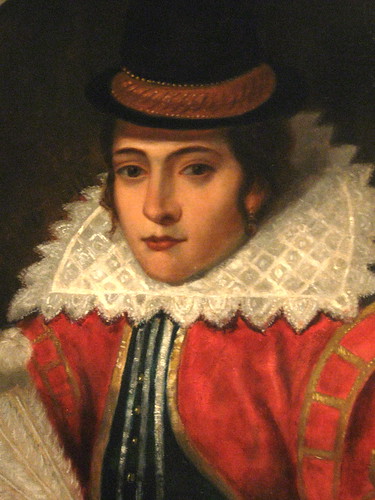
Pocahontas's formal names were Matoaka (or Matoika) and Amonute. Pocahontas is a childhood name that perhaps referred to her playful nature. After her marriage to John Rolfe, she was known as Rebecca Rolfe.
Archeologists say that they have Discovered the Church [click to read] where Pocahontas married Jamestown planter John Rolfe.
Harvest Hymn Written
in 1844 by Henry Alford
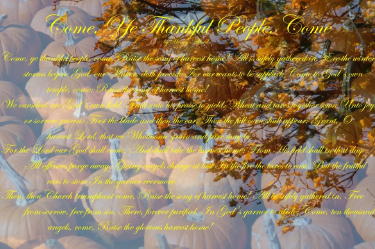
“Come, Ye Thankful People, Come” is a harvest hymn written in 1844 by Henry Alford. It is often sung to the tune “St. George's Windsor” by George Job Elvey. So I created this in light of Thanksgiving to remind us of what we should really be thankful for. Two of my photos are overlayed with the text of the hymn added." -- Kristina Elaine Greer Photo Graphic by Kristina Elaine Greer
View Larger Image [click to view]
The First Thanksgiving... in VIRGINIA!
It wasn't a grand feast, but rather a time of giving thanks! on December 4, 1619, almost 2 years before the pilgrims held the feast with their Native American benefactors, Captain John Woodlief came ashore near the present site of the Berkeley Plantation. He had sailed from Bristol, England in the Good Ship Margaret with 35 men. They had survived a harrowing storm on November 29th and felt great gratitude for their deliverance. Here is Their Story [click to read].
Lessons from Squanto for Today
The Man Who Taught the Pilgrims Offers Wisdom
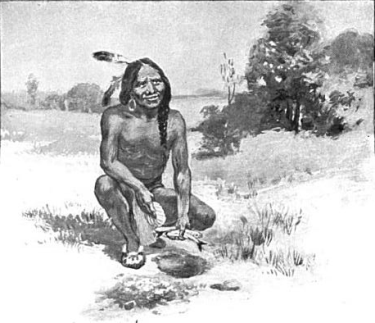
In this 1911 illustration, Tisquantum teaches the settlers how to plant maize.
Here is an interesting ebook: Squanto's Garden [click to read] from Off the Grid News. Most of us know some snippets of Squanto's story... how he taught the settlers how to successfully cultivate the soil of their new home, but Bill Heid actually shares some practical gardening tips and garden layouts that Squanto might have shared with the Pilgrims. He also fills out Tisquantum's story, giving us insight into a man who's unusual life uniquely equipped him to teach others.
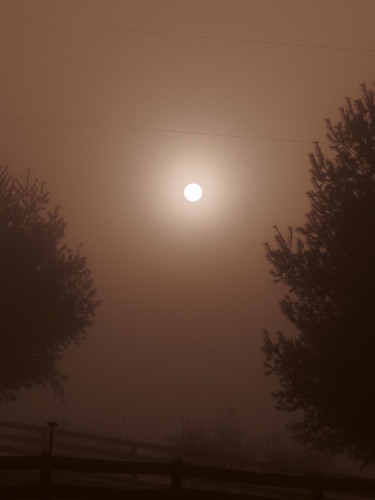
The Sun burns through a morning mist on Thanksgiving Eve.
A Native American's Amazing Story
" ... a special instrument sent by God for their good beyond their expectations ..." -- William Bradford
Today millions of Americans will dine on turkey and celebrate Thanksgiving. Most people will realize that it has some connection to the Pilgrims in Massachussetts, but the story of G-d's provision and the reason for the celebration seem to have faded in our collective memories.
The Pilgrims came to the New World for their kids. They were a Christian group who sought to live for G-d rather than be seduced by the culture around them. They lived in Holland for a while but they saw their children falling away from the faith.
So they moved. They sought passage on a ship bound for Virginia. The ship went off course and they landed in Massachussetts instead. They had a rough time of it their first winter and almost half of them died. Still, when offered the chance to return to Europe, they declined. Then one of the indigenous people walked into camp and spoke to them in English!
The man's name was Samoset, and he introduced the Pilgrims to Squanto, who taught the Pilgrims many things to help them survive in the new world. Squanto spoke even better English than Samoset. His story is amazing.
Squanto had first met Europeans around 1605 when Captain John Smith made his famous voyage. He travelled to England with him but when he returned to America he was captured into slavery and returned to Europe. Spanish monks bought his freedom and sent him to England where he found passage back to America. Sadly, his village was now gone, the people wiped out by disease. He found people nearby to live with but one day heard that a new group of people were living where his old village had stood. What's more, they spoke that funny new language that he had learned.
Samoset made the introduction and the rest, you might say, is history. Thanks to Squanto the Pilgrims survived and began to do quite well in the new world. Their relations with the Native people were quite good and their Thanksgiving was for the amazing provision they found in Squanto, of whom it was said:
" ... He desired honor, which he loved as his life and preferred before his peace ..."

Volume XVII, Issue XXI:
A Repeat of One of Our Favorite Issues
The Forgotten Season
The turkey leftovers were still cooling when the much media hyped 'Black Friday' events began. In a Long Island Wal Mart, a young associate was trampled to death as bargain hunters literally broke down the doors. A young man had to die because twenty dollars could be saved on flatscreens. Managers closed the store and someone actually was irate that he couldn't get in. Come on, if a colleague has died, its 'Game Over' on the shopping frenzy. Close the store and try to help the poor man's significant others. To hell with reopening for the remainder of the day! Management reopened the store at one o'clock that afternoon. Satirical publication 'The Onion' came out with a story where thousands were 'reported' to have died in Black Friday shopping. I did not find it funny. One death to satisfy the greed gods is too many. Our prayers go out to the family and friends of this young man. May they find comfort.
Lost in the madness of Black Friday, Cyber Monday and yes, even Small Business Saturday is the wonderful celebration of Advent. The high churches still celebrate it. It is a time of waiting and preparation for the miracle to come. It is so un-modern! It ties us to history. The traditions of Judaism are full of waiting. Abraham and Sarah saw the child of promise when they were way past the age of child bearing. I sometimes think of one-hundred year old Sarah as a preschool parent and join her in her laughter! Then there was Joseph and his imprisonment, followed by hundreds of years of exile in Egypt. We often think about the Promised Land, but we forget that all Promised Lands seem to require a prep!
In fact, there came a time when people forgot the lessons of the brick kilns and lost the Promised Land to the Babylonians and the Persians. The Temple, center of worship, was destroyed. But it was in this time of living as expats that the community of the Synagogue strengthened the people anew. Ezra and Nehemiah presided over a return to the land of promise. Again, the promise required a prep. As the exiles built the prosperity of Persia, they prepared themselves for the time when they would build their own.
A second Temple was built. The exiles returned. Then came the great empires of the Greeks and the Romans. The Temple was rebuilt, but the heavy hand of Roman rule presided over a time of trouble. Many looked to the future Messiah to put things aright. Indeed, there were many who claimed to BE Messiah. They came and went. But in a time when Heaven seemed so distant, there came another child of promise... to a couple way past child bearing. John the Baptist, a "Voice crying in the wilderness," came saying: "Prepare ye the way of the Lord." At the same season of history, his mother Elizabeth's cousin Mary came to visit.
Mary had been visited by an angel and told that she, a virgin, would bear the child of promise. Though this was an incredible blessing, she faced the prospect of unwed motherhood... in a culture that stoned you for it. Her betrothed, however, had also been given a message from Heaven, that he should take her for his wife. What incredible faith and love! When I chose my Confirmation name, as a boy, I took the name Joseph. It was not that I ever thought I could match such selfless love, but that I so admired it! Even to this day, some of the people I admire the most are those men who have stepped into the lives of children they did not physically father, and yet have earned the name Dad nonetheless! These men live as both an example and a challenge to me. Some of them are my juniors in years, but they far surpass in their maturity!
Such are the lessons we miss if we merely content ourselves with instant gratification. There is an old saying: "Rome wasn't built in a day." Indeed our own nation cast off from its sure position as an English colony to pursue an uncertain future. In 1812 England returned to burn the young country's capital. The White House is so called because its sandstone outer walls had to be painted after the burning left them permanently blackened. By the middle of the Nineteenth Century, however, Isambard Kingdom Brunel was building great ships to strengthen Bristol's trade with America. A hundred years after barely surviving her revolution, the nation we know had taken her place as a world power.
Why Advent is Important to Artists [click to read]
Advent is a celebration of the incarnation. It is perhaps the greatest of Christian mysteries, that the Creator G-d would voluntarily and willfully become Man. The Infinite would clothe Himself in the finite. G-d would love us to such a degree that He would become one of us, G-d with Us, Emmanuel." -- Manuel Luz
We do well to celebrate Advent, though it is largely forgotten in the popular narrative, because it causes us to pause and prepare. In a world where preparation is limited to four years it does us good to remember the lessons of centuries. Advent allows us to step back from our busy lives and ponder timeless truths... like the man that the Bethlehem baby grew to be. He too died, some say on a Friday, but his death was not just his own. Did He indeed carry the sins of the world? The account of His Resurrection causes us to ponder mysteries far greater than ourselves and our puny wants. We should indeed consider the life of this man.
Art is incarnational by nature. Art is the incarnation of concepts and ideas and emotions onto a canvas or a page or a stage or a screen. The act of art is to take these ideas and flesh them out in our artistic mediums—the visual arts, the literary arts, dance and movement, cinema and videography, music, theater. In the same way, our Artist G-d takes His love for us and fleshes it out by entering into the universe by becoming human. Jesus, “through Him all things were made,” becomes man." -- Manuel Luz

Autumn Evening. Photo by Bob Kirchman.
Jules Verne’s ‘Lost’ Novel
Imagine a World without Art
By Bob Kirchman
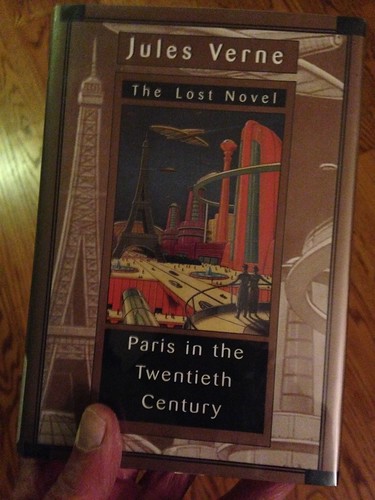
Jean Verne is the great-grandson of the famous author and futurist Jules Verne. In 1989 Jean was getting ready to sell a family home and made an amazing discovery. There was a huge bronze safe that the keys to had long since been lost. Although it was believed to be empty, the young Verne opened it with a blowtorch anyway. There in the safe was a manuscript. It was a novel called ‘Paris in the Twentieth Century,’ which Verne had submitted to his publisher Jules Hetzel right after the success of his first novel: Five Weeks in a Balloon.’ Hetzel had rejected it in 1863 saying “It’s a hundred feet below ‘Five Weeks in a Balloon.’ Hetzel went on to say “No one today will believe your prophecy!”
Verne’s vision of a modern Paris in 1960 indeed predicts skyscrapers and technology that came to be, but it is even more amazing to note that Verne’s dystopia predicts a future world where the great art, literature and music – the rich fruits of centuries of Western culture – have been all but forgotten! Instead, the culture of the day celebrates technology and commerce. ‘Old’ things have nothing to say to us anymore! The hero of the story, young Michel Dufrénoy, goes into a modern bookstore and asks if they have anything by Victor Hugo. The clerk responds by asking “what did he write?”
Jules Verne predicts most damningly our society’s modern intoxication with ugliness. Go to any modern art school or venue and you find more of a cold mechanical sort of art aimed more at ‘expression.’ Roger Scruton has written on this phenomenon and how the great works of the past have been pushed aside. [2.] Scruton opines: “The current habit of desecrating beauty suggests that people are as aware as they ever were of the presence of sacred things. Desecration is a kind of defense against the sacred, an attempt to destroy its claims. In the presence of sacred things, our lives are judged, and to escape that judgment, we destroy the thing that seems to accuse us.”
Thus Michel and his friends, artists of the ‘old’ school, are faced with the challenge of preserving the old and instructive culture in the face of a modern world that distains it. Verne’s work finds itself specifically troubling in its prediction of modern society’s distaste for a past that would inform it! And so, much like Dufrénoy’s friend and colleague Quinsonnas, we find ourselves as artists frustrated by the modern culture. We long, as he did to somehow ‘astound the age!’
Early industrialization did not of itself produce bad art. The Brooklyn Bridge, the Eiffel Tower and classicized ironfront buildings all carried forward a certain sense of beauty and proportion. The revolt against the traditions of the past was more intentional as in 1917 when Marcel Duchamp sought to parody traditional art’s over-concern with technique. He signed a plumbing fixture ‘R. Mutt’ and entered it in an exhibition. What he meant as a paradoxical statement, however, the art intelligentsia took for a serious movement. Ever since Duchamp’s urinal the world of art has itself destroyed the place of beauty.
For its part, industrialization has had a mixed effect. The 1962 Seattle World’s Fair’s ‘Hall of Science’ is as beautiful as the Eiffel Tower. It is in its own right quite a contrast to Frank Gehry’s ‘Experience Music Project.’ The 1964 New York World’s Fair was the ‘great cathedral’ of modern progress. In fact, it featured a ‘Carousel of Progress’ which had its own hymn: “Great Big Beautiful Tomorrow.” Men were headed to the moon. Technology was indeed going to end want and darkness.
But this new world, secured by ‘mutually assured destruction,’ created questions of its own. Technology created pollution. The promise faded into disillusionment and forced upon us a new conundrum. We had discarded ‘antiquated’ notions such as EX NIHILO creation – science was still our new god – but now science informed us that technology was a source of evil. Thus the Twentieth Century inherited a new Cosmology and has found it wanting!
The problem is that we have discarded the Wisdom of Centuries, even as we lean unapologetically on ‘modern’ science to inform us. We seek naturalistic answers or philosophical ones. We shun the truly transcendent ones. Indeed, Paris in the Twentieth Century looks at our present time and asks the hard questions.
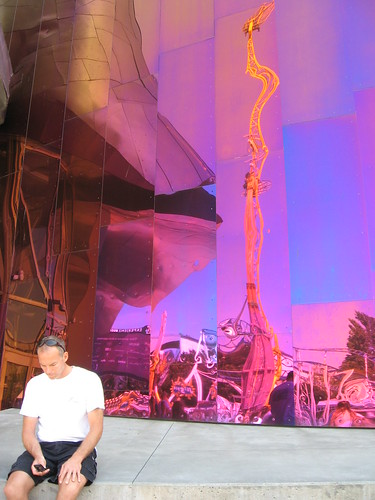
Counting on Katherine
How the Brilliant Mathematician Saved Apollo 13
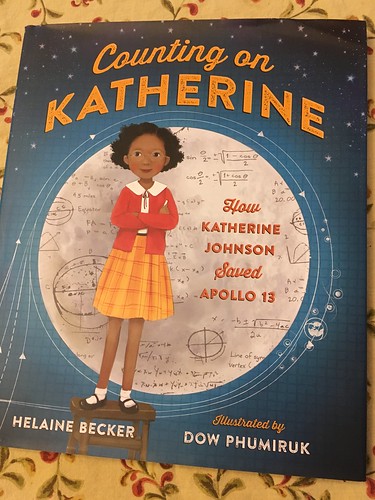
Helaine Becker's children's book tells more of the Katherine Johnson story.
The Woman with the ‘Right Stuff’
[click to read]
Katherine Johnson Plotted the Way
By Steven J. Niven
Get the girl to check the numbers.” These words came from astronaut John Glenn in February 1962 as he prepared to become the first American to orbit the Earth. The trajectory of his orbit had been calculated by NASA’s new state-of-the-art computers, but Glenn did not trust the machines. Mercury 7 astronauts had always relied on “computers in skirts,” women who were mathematicians at NASA’s Langley Research Center in Hampton, Va., for such flight data. So before he made his historic voyage into space, Glenn called on Katherine Johnson to recheck the computer’s analysis, knowing that she had provided similar calculations for Alan Shepard, the first American in space. Johnson, one of the few African-American women then working for NASA, calculated and confirmed the data for Glenn’s orbit. The launch went ahead and Glenn became the first American to orbit the Earth, 10 months after the Soviet Union’s Yuri Gagarin was the first human being to make that journey. Johnson’s role was little recognized at the time, but she would go on to play a significant—though, again, largely hidden—role in the first moon landing and in U.S. space exploration in the 1970s and 1980s. She did so by doing what she had always loved: math. (read more)
Truth Behind Moon Landings
Debunking the Conspiracy Theorists
Simple explanations for the most common conspiracy explanations.
The Beauty of Quiet Statements
Like many people this week, I was saddened to learn that my favorite restaurant was stepping back from supporting family affirming charities such as the Salvation Army. I understand the dynamics behind this decision and while I don’t agree with the reasoning (or the timing) of this, I still love Chick Fil A – especially the local operator’s two stores that employ many young people I know. I am saddened because the corporate office has announced that they intend “instead” to focus on charities that “help the disadvantaged in their communities.” If that is what you want, I cannot think of an organization that does more for their communities than the Salvation Army. Moreover, I loved that Chick Fil A stood for a lot of us small businesses, such as cake makers and photographers, who were being singled out for following our beliefs in our business.
I repeat, I still love Chick Fil A, but I on my own intend to make a chicken sandwich at home next week and I will put the seven dollars I would have spent on a Chick Fil A lunch in the first available red kettle. I am NOT creating or advocating a boycott mind you, rather I am making a decision to go direct with my support to a good organization. I’ll still enjoy my favorite restaurant, but I will make a conscious effort to direct my own giving. That means I’ll give up a meal out every now and then.
Growing up in parochial schools, one of the nobler things I respected was the call to personal denial and sacrifice for the noble cause. To that I offer the suggestion that all of us think more on this level. Quietly make a difference that no one will know about. It might just develop into a lovely habit!
Icy Fence in Virginia
Photo by Karen Brookshire
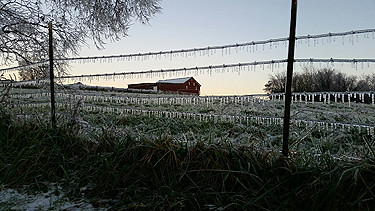
Ice on barbed wire after last year's ice storm in Virginia.
Philippians 4:19
Photo by Bob Kirchman

But my God shall supply all your need according to his riches in glory by Christ Jesus.” – Philippians 4:19


